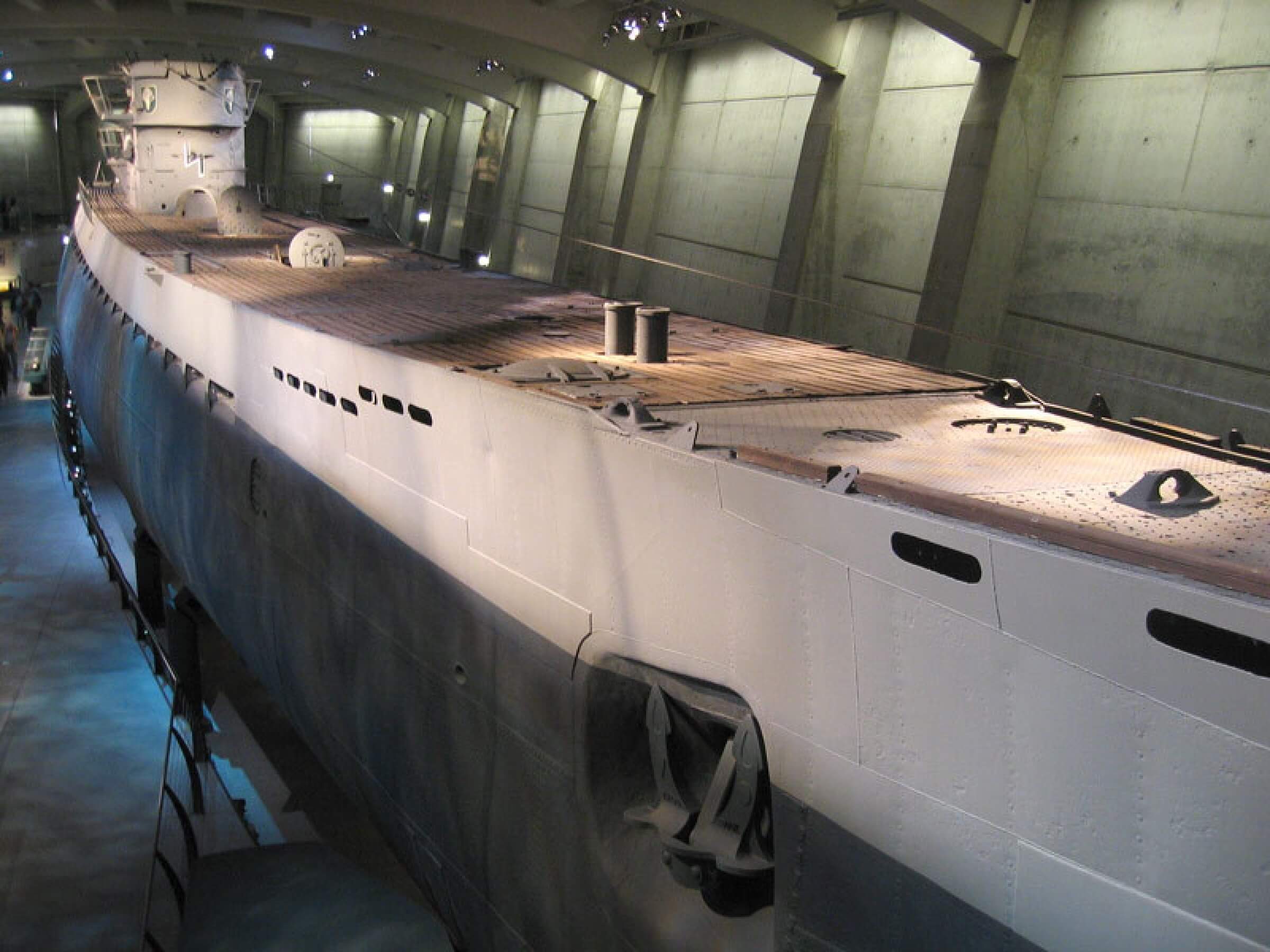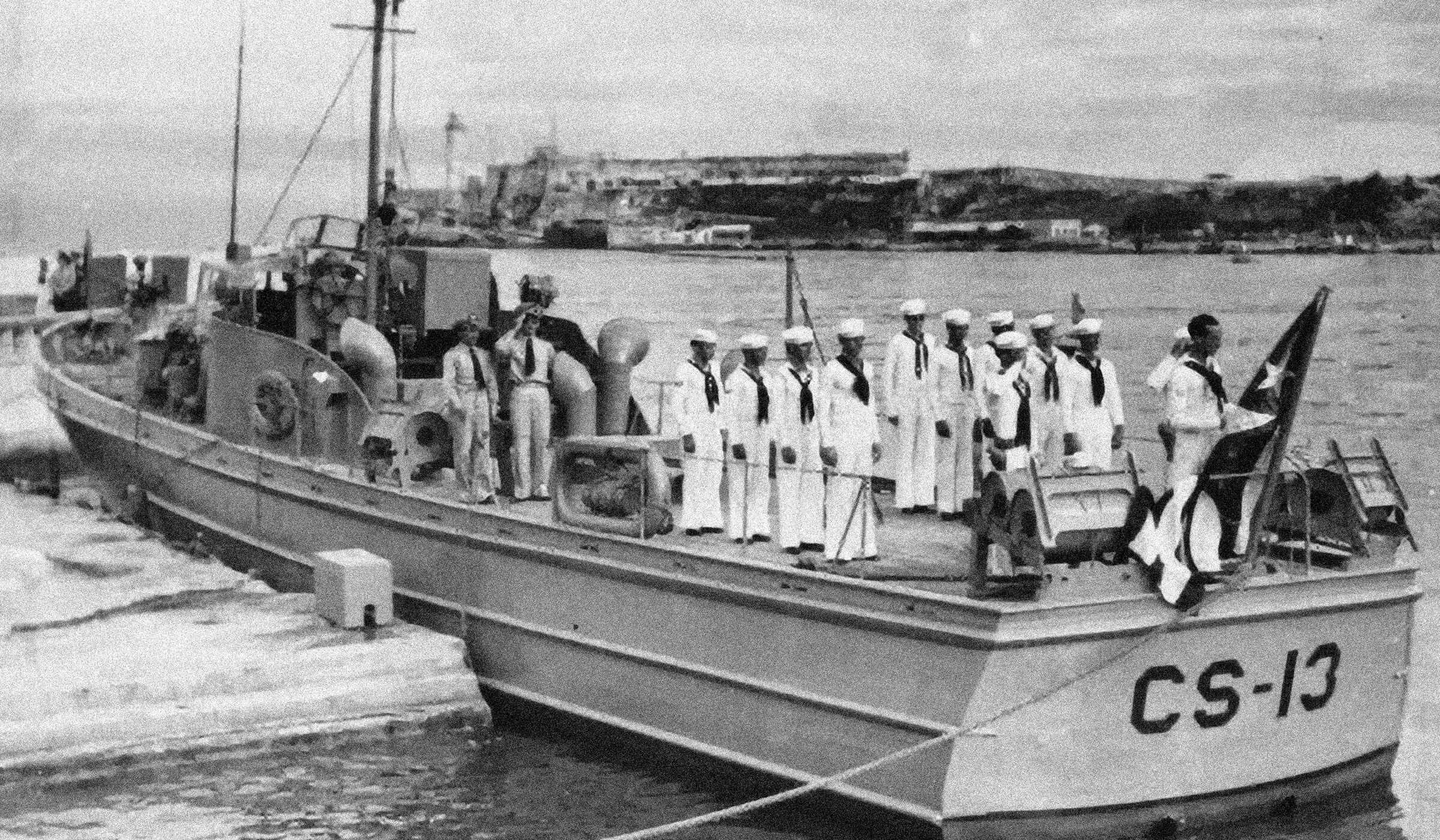Stealth and deadly, U-boats were one of Germany’s most effective weapons in World War II. With ruthless abandon, they aimed their torpedoes at both military and merchant vessels, sinking nearly 3,000 ships and killing upwards of 30,000 people.

Typical Type IXC Boat, like the U-176
U-176 was one such killing machine. The 251-foot German submarine spent its first WWII patrol in the North Atlantic. Lurking underwater, the U-boat wreaked havoc on unsuspecting ships, sinking an unescorted 7,798-ton British merchantman, one Greek and three British cargo ships, and an abandoned 3,701-ton British ship in just 74 days at sea.
During its second patrol in the South Atlantic, U-176 continued its reign of terror, taking down Dutch, Swedish and British ships. However, it was her third patrol that lured the submarine to the Caribbean Sea where U-176 would meet its fate at the hands of an 83-foot sub-hunter made by the Wheeler Shipyard Corporation.
Supporting the Cuban Navy
Cuba declared war on the Axis powers in December 1941, making it one of the first Latin American nations to enter the conflict. The island’s location at the entrance of the Gulf of Mexico, trading ports and natural resources made Cuba an important strategic asset to the Allies’ war effort. It was also one of the biggest beneficiaries of the United States’ Lend-Lease program.
The Lend-Lease Act authorized the U.S. government to provide war supplies to any nation deemed vital to America’s defense. Protecting Allied ships in the hostile Caribbean waters was a high priority for the U.S., so it lent the Cuban Navy a dozen 83-foot sub hunters, built by Wheeler.
U-boat Attacks Off of Cuba
Leaving Havana in the early morning hours of May 13, 1943, Mambi, a 1,983-ton Cuban steam tanker, and Nickeliner, a 2,249-ton American ammonia tanker, set off in a convoy accompanied by three patrol vessels.
Aboard Mambi, a guard was stationed to scan the water for danger. Around 3:30 a.m., his worst nightmare appeared — a phosphorescent wake 60 feet ahead — the tell-tale sign of an impending torpedo attack.
In a matter of seconds, the torpedo made catastrophic contact on the port side of the ship. The engines, radio, steering gear, and superstructure were all destroyed instantly and the impact broke Mambi in two. She immediately began taking on water and sank within one minute. Only a handful of men made it to lifeboats, while 21 perished.
With Mambi obliterated, U-176 quickly set its sight on its next target: Nickeliner with 31 souls on board. The ship was America’s only vessel with the capacity to transport bulk quantities of ammonia, a gas that can be an explosion hazard when exposed to high heat.
The first torpedo U-176 launched at Nickeliner hit its port bow and was powerful enough to lift her front out of the water and send flames 100 feet into the air. A second torpedo continued the attack, this time penetrating the port side aft and releasing ammonia from the tanks. The crew worked feverishly for the next 30 minutes to secure the ship but was ultimately forced to flee into lifeboats as she slowly submerged into the sea. Miraculously they all survived the ordeal and were picked up by a Cuban sub chaser and returned to the port city of Nuevitas in Cuba.
While the attacks were big losses for Cuba and the U.S., the mayday calls alerted both navies to the U-boat’s approximate location. Over the next two days, they tracked U-176 in the Nicholas Channel running between The Bahamas and Cuba.

Making Maritime History
On May 15, 1943, the Wheeler-built CS-13 (short for Caza Submarino), was escorting Cuban and Honduran merchant ships along with two other patrol boats. Second Lieutenant Mario Ramirez Delgado was commanding CS-13 and Norberto Collado Abreu, a sailor with an uncanny sense of hearing who would be at the helm of a Wheeler yacht on a history-changing voyage 13 years later, was also a part of the crew.
The squadron set sail from Isabela de Sagua and was heading toward Havana when a surfaced U-boat was detected off the coast. Just as the U-boat dove, a U.S. Navy Kingfisher aircraft dropped smoke floats to mark its location.
Delgado received orders to pursue the U-boat and steered his ship toward the marker. At just a third of the size of its target, and only equipped with short-range sonar and six depth charges, CS-13 had one thing other sub chasers lacked: the superior hearing of Abreu. From the sonar station, Abreu managed to detect the precise location of U-176 from 900 yards away.
At Delgado’s command, three depth charges were dropped from the stern to explode at depths of 100, 150 and 250 feet. Abreu listened intently to the sonar, reporting sounds that signaled four underwater explosions. To be certain the CS-13 crew had completed its mission, the steel boat launched two more depth charges. A few minutes later, a black, viscous liquid coated the surface of the water, reeking of gasoline, yet smelling of victory.
CS-13 had achieved the unthinkable. It was the smallest ship ever and only non-American crew to sink a U-boat unassisted during WWII. Fifty-three Germans went down with their ship, while CS-13 rejoined the convoy and sailed onto its destination.
The Aftermath
Rear Admiral Samuel E. Morison, an official historian of the U.S. Navy, recognized the small, but mighty Cuban Navy for its skilled seamanship, efficiency and contributions in his work “History of United States Naval Operations in World War II.” In 1946, Delgado was promoted to Lieutenant and awarded his country’s Medal of Naval Merit for being the only Cuban to sink a U-boat in the war.
Decades later on Armed Forces Day May 16, 2015, the U.S. Coast Guard 7th District, Base Miami Beach, held a ceremony commemorating the anniversary of U-176’s sinking. The officers and crew of CS-13 and 10 members of the Wheeler family were in attendance and honored for their contributions to naval history.
For more fascinating moments in history aboard a Wheeler yacht, check out Fishing for Nazis and The Ship that Inspired Hemingway’s “The Old Man & the Sea.”
